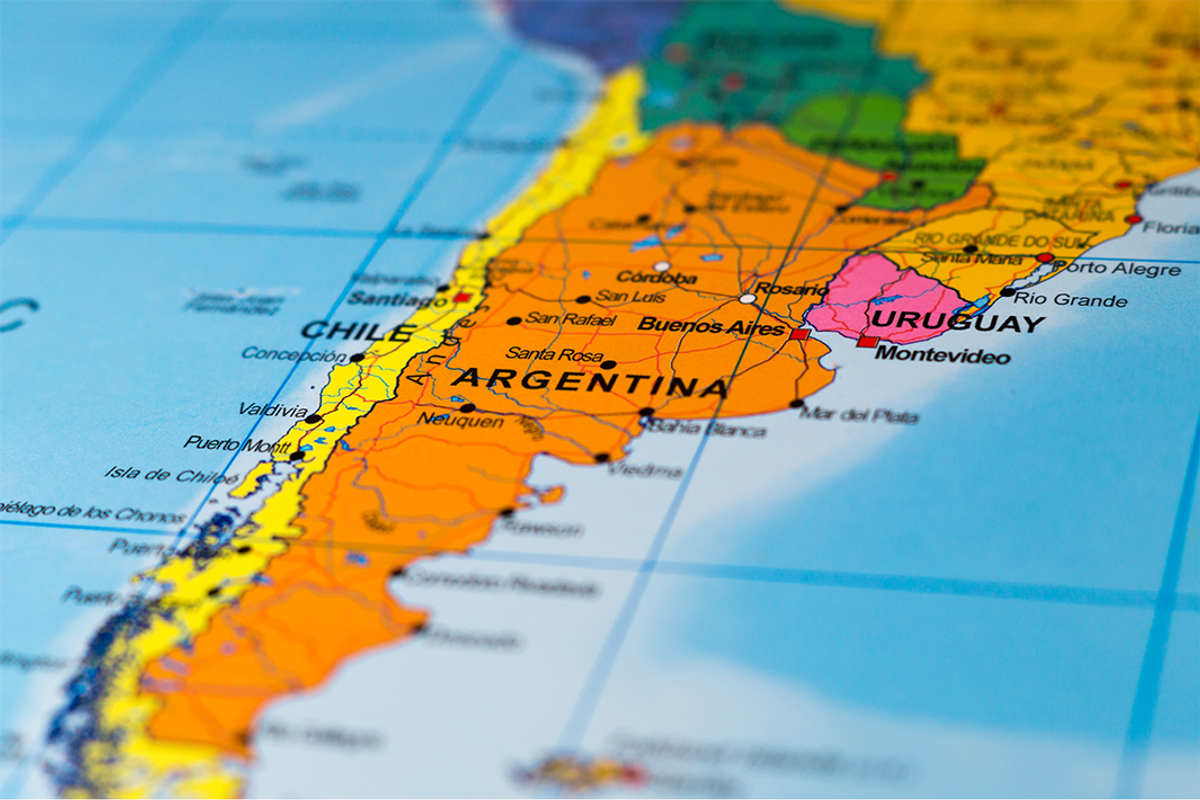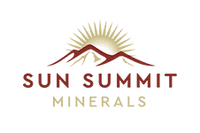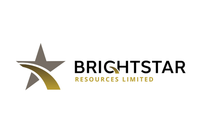New Government, Economic Reforms Spark Renewed Interest in Argentina’s Resource Sector

As Argentina’s new economic policies resolve under the country's new administration, investors may find some new opportunities in the nation's minerals sector.
Amid Argentina’s high inflation and poverty rates — brought on by a century of political instability and economic uncertainty — its new Libertarian president, chainsaw-wielding Javier Milei, has vowed to implement improvements, much to the delight of mining and resource industry observers who view him positively.
As Argentina’s new economic policies resolve under the country'snew administration, investors may find some new opportunities in the nation's minerals sector.
Historical and current political and economic landscapes
During the 1920s, Argentinians had higher incomes than the French, Italians and Spanish. Millions of immigrants from across Europe and South Africa arrived in Buenos Aires. The Jewish population in Buenos Aires was larger than everywhere, except New York.
Without taxing or registering immigrants, Argentina was truly a “free” country. Immigration influx, natural wealth, small government, rule of law and respect for property rights propelled it to the sixth richest country, with incomes similar to those in England.
In 1941, Argentina was wealthy, with most of that wealth produced by landowners who exported beef and grains. Today it’s positioned 38th in median income, below Belarus.
As any political pundit will acknowledge, more votes are in cities. Urban voters fell for “Peronism” — steal from the rich, give to the poor and get elected. Juan Perón, minister of labour, settled strikes by increasing wages, and when elected president in 1946, he continued. Government-run pensions and restrictive labour laws kept the votes coming. The government grabbed farm exports and key industries. Price controls kept urban voters happy.
That’s been the pattern for 100 years — make promises, print money, run deficits, borrow and repeat. When bills come due, print more money while blaming the rich and going broke every decade or so.
The military has taken over twice. The government has defaulted on its debt 12 times. Inflation has reached 249 percent. Unfortunately, a healthy economy can neither be built with nor fixed with debt.
Argentina’s economic distress and chronic inflation come from creating money and overspending. When Milei became president he promised to end inflation and spur economic growth.
Argentina’s mineral resources and mining sector
Covering an area of 2.8 million square kilometres and spanning almost 4,000 kilometres long, Argentina’s climate incorporates rainforest-covered tropics and sub-Antarctic conditions.
Rich in metals, its mineral resources include gold, silver, lead, zinc, tin, copper, iron ore, manganese, petroleum, uranium and lithium.
In Argentina, foreign individuals and entities can acquire and hold mineral rights, although federal or provincial governments own the mineral resources in their jurisdictions. Local authorities grant individuals and legal entities exploration and development concessions, keeping with the Argentina Mining Code.
New economic agenda
Milei has already begun lifting economic restrictions and controlling the fiscal deficit.
Without reserves to repay creditors, he asked the International Monetary Fund to resume the existing program, which had been on hold, thanks to unrealistic election promises from the opposition.
In his first six months, Milei slashed spending, halted public works projects and cut revenue payments to provinces to achieve a fiscal surplus. He also chopped the number of ministries in half and eliminated 70,000 public sector jobs. He suspended new public works contracts and removed numerous subsidies.
Under Milei, the Argentine monthly inflation rate fell from 25 percent in December 2023 to 11 percent in March 2024. Those results have boosted citizen and investor confidence while showing the effectiveness of strict economic policies.
Passed with another law bringing in tax reforms, the Ley de Bases permits some government-owned entities to be privatised and promotes the development of large projects.
The Ley de Bases shields investors from the risks of the Argentine economy while it outlines tax, foreign exchange and regulatory incentives, including a 30 year stability guarantee.
It’s also intended to bring more adaptability to the labour market, authorise renegotiations of several public infrastructure contracts and modernise energy regulations.
Income tax has been reduced to a fixed 25 percent rate. It has changed amortising assets and value-added tax payments, with the option of carrying losses forward, while taxes on dividends are reduced to 7 percent and, after seven years, reduced to 3.5 percent.
Re-energised mining sector
When protests caused the Panamanian government to force First Quantum Minerals (TSX:FM,OTC Pink:FQVLF) to close its mine, it removed 1 percent of the global copper supply. Not so in Argentina, where new incentives are attracting major players.
Among those is Piche Resources (ASX:PR2), which owns two highly prospective exploration properties in Argentina — the 1,300 square kilometre Sierra Cuadrada uranium project, and Cerro Chacon, a 365 square kilometre land package with gold and silver occurrences. These two properties strategically position Piche to leverage two minerals — uranium and gold — that are currently experiencing tremendous growth.
Sierra Cuadrada, located in the San Jorge Basin, has a significant history of high-grade, near-surface uranium-mining operations, and provides Piche significant exploration upside amid a rapidly expanding uranium market.
The Cerro Chacon gold project is located 10 kilometres south of Paso de Indios in the Chubut Province of Argentina. Structural mapping and geochemical sampling at the Chacon Grid have identified mineralised systems consistent with surface signatures at the Cerro Negro mine, which boasts a contained metal inventory of 5.8 million ounces of gold and 50 million ounces of silver.
Golden Arrow Resources (TSXV:GRG,OTCQB:GARWF) is also actively exploring its Yanso project in the Eastern San Juan province, where its team has detected several gold targets.
Argentina Lithium & Energy's (TSXV:LIT,OTCQX:LILIF) Rincon West project comprises 5,000 hectares of claims at the Rincon salar in Salta Province, Argentina. Australian junior Argosy Minerals (ASX:AGY,OTC Pink:ARYMF) controls concessions in the southeast area of the salar, from which it has generated 20 tonnes of battery-grade lithium carbonate.
Rio Tinto (ASX:RIO,NYSE:RIO,LSE:RIO) purchased a large chunk of the Rincon salar in 2021, and has been actively exploring lithium projects in Argentina since.
Eyeing Argentina as a source of copper, BHP (ASX:RIO,NYSE:RIO,LSE:RIO) has invested there for the first time in 20 years. It has partnered with Lundin Mining (TSX:LUN,OTC Pink:LUNMF) to buy out Filo (TSX:FIL,OTCQX:FLMMF) and develop two copper mines bordering Chile.
Investor takeaway
The historically volatile Argentinian economy has stymied its mining industry for decades. Now, with a new government promising sweeping economic changes, mining companies are re-entering the region, sparking market optimism for Argentina to emerge as a stable, secure source of high-demand metals of the future.
This INNSpired article is sponsored by Piche Resources (ASX:PR2). This INNSpired article provides information which was sourced by the Investing News Network (INN) and approved by Piche Resources in order to help investors learn more about the company. Piche Resources is a client of INN. The company’s campaign fees pay for INN to create and update this INNSpired article.
This INNSpired article was written according to INN editorial standards to educate investors.
INN does not provide investment advice and the information on this profile should not be considered a recommendation to buy or sell any security. INN does not endorse or recommend the business, products, services or securities of any company profiled.
The information contained here is for information purposes only and is not to be construed as an offer or solicitation for the sale or purchase of securities. Readers should conduct their own research for all information publicly available concerning the company. Prior to making any investment decision, it is recommended that readers consult directly with Piche Resources and seek advice from a qualified investment advisor.





